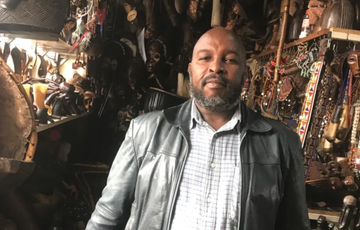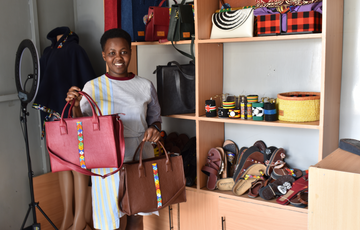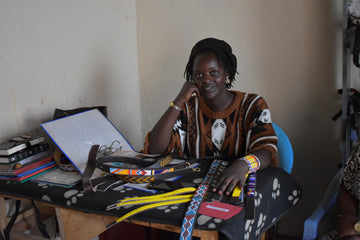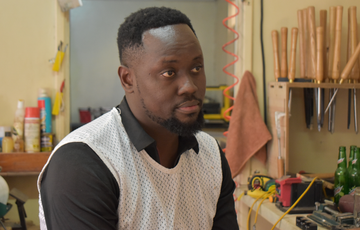Around the globe, collectors are entranced by the charm of African antique art, which boasts a cultural legacy of great depth and expert artistry. Follow us as we explore the storied path of Sylvester Gachuru, a passionate enthusiast who diligently endeavors to safeguard these priceless relics. His tale is one of persistence, fortitude, and an abiding affection for the intricate designs. Beginning his journey at Kigali Market, Sylvester's collection gradually grew into an extraordinary exhibit.
Working among the hustle and bustle of Kigali Market in 1995, Sylvester discovered a newfound fascination with the array of art pieces originating from different parts of Africa. His curiosity piqued by the historical and aesthetic treasures buried within these artifacts, he soon found himself enticed deeper into the world of antique art. However, his journey faced a major setback in 1996 during the bombing. This led to the closure of Kigali Market and the eviction of its occupants. Undeterred by this unfortunate turn of events, Sylvester relocated to Westlands and engaged in other business ventures. But his heart remained tied to the world of African antique art, and in 1998, he resumed his passion for collecting masks.
Sylvester's dedication to his craft grew stronger over time. In order to pursue his dreams, he eventually married and purchased a plot of land, which served as a base for displaying and marketing his growing collection. This achievement enabled him to share his enthusiasm with others while also contributing to the preservation and appreciation of African art. Each African tribe has its own emblem and way of life, which is reflected in their distinctive artwork. Sylvester enjoys the various materials and artistic expressions of African antique art, from beadwork to masks.

Sylvester's collection of Rega Masks on Mawu Marketplace.
A shield made by the Dinka tribe was a memorable purchase for Sylvester. The remarkable creativity and skill displayed in its design made this particular piece significant to him.
The shield, woven from leather, displayed the Dinka artisans' intricate craftsmanship. The use of natural materials not only piqued Sylvester's interest, but also highlighted the tribe's connection to their surroundings. This one-of-a-kind piece of art served as a testament to the Dinka people's resourcefulness and ingenuity, making it a treasured addition to Sylvester's collection.
Authenticating and verifying the authenticity of African antique art is a time-consuming process that Sylvester takes very seriously. He considers the condition of the materials used in the artwork. Genuine antiques frequently show signs of age, such as a smoky patina or wear and tear, indicating their historical significance. One of the difficulties he faces is that some artisans try to rebrand or alter the original design of the artifacts, making it more difficult to determine their authenticity. Furthermore, some customers may unintentionally cause damage by combining new and old materials, resulting in cracks or structural issues in masks or sculptures. Another issue arises when using new wood, as it is susceptible to ant destruction if not properly treated. Sylvester strives to ensure the authenticity of each African antique art piece he acquires through meticulous examination and a keen eye for detail.

Sylvester's collection of Luba Masks Found on Mawu Marketplace
Sylvester assesses African antique art pieces based on purpose and originality, ensuring preservation and care. He regularly dusts and applies preservative oil to enhance masks. He sources art from West Africa, Mali, Cameroon, Ghana, Kenya, and Tanzania, showcasing their rich artistic heritage and unique cultures.
Sylvester faced challenges such as language barriers, the rarity of items, and the wearing off of cultural practices. The future of African antique art collecting may see increased pricing as the market grows, and Sylvester advises understanding the people and history behind the art when starting a collection. Each African antique art piece conveys its own story and resonates with Sylvester, such as the significance of the Kikuyu shield for the boy child who goes through circumcision. Overall, African antique art contributes to the global appreciation and recognition of African culture by symbolizing past traditions and showcasing the strength and heritage of African communities.
Parting Short: For someone interested in starting their own collection of African antique art, my advice would be to prioritize understanding the people you're dealing with. Authenticity is crucial, as some individuals may attempt to copy or replicate art pieces. Having someone knowledgeable about the collection and its history can provide valuable guidance and ensure you make informed choices. Take the time to learn about the cultural context and significance of the art pieces you wish to collect, allowing you to appreciate their true value and preserve their authenticity.





